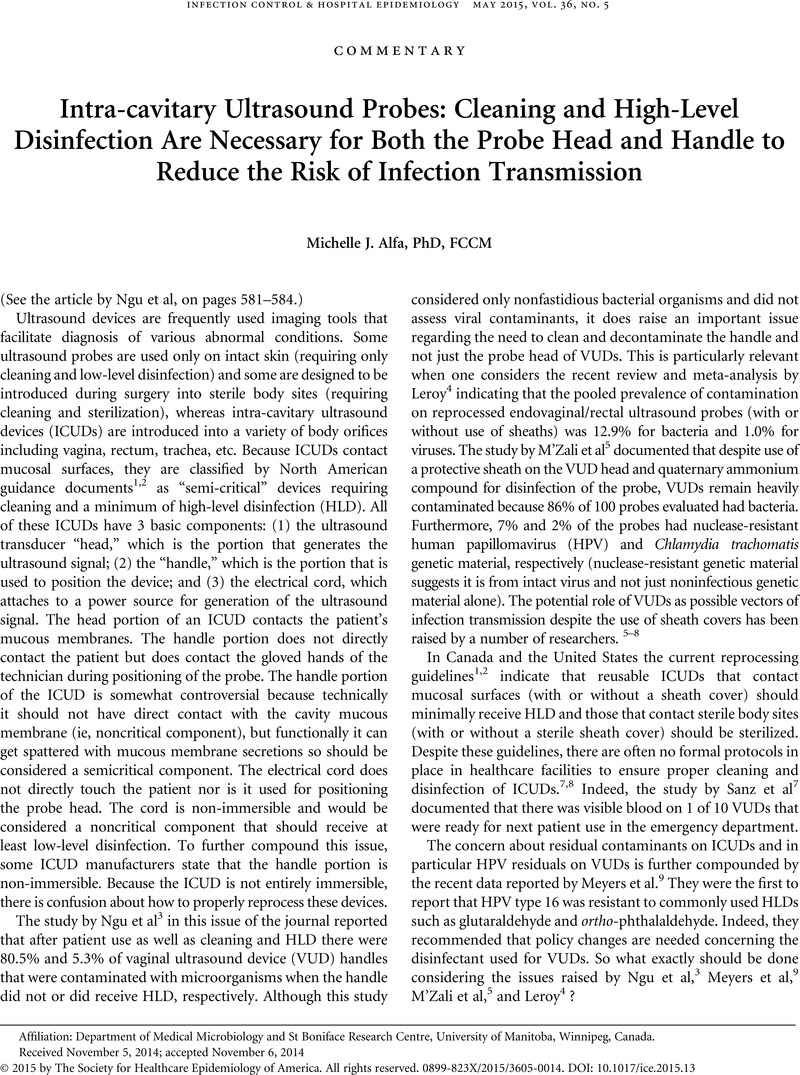Crossref Citations
This article has been cited by the following publications. This list is generated based on data provided by Crossref.
Moshkanbaryans, Lia
Meyers, Craig
Ngu, Andrew
and
Burdach, Jon
2015.
The importance of infection prevention and control in medical ultrasound.
Australasian Journal of Ultrasound in Medicine,
Vol. 18,
Issue. 3,
p.
96.
Combs, C. Andrew
and
Fishman, Alan
2016.
A proposal to reduce the risk of transmission of human papilloma virus via transvaginal ultrasound.
American Journal of Obstetrics and Gynecology,
Vol. 215,
Issue. 1,
p.
63.
Abramowicz, Jacques S.
Evans, David H.
Fowlkes, J. Brian
Maršal, Karel
and
terHaar, Gail
2017.
Guidelines for Cleaning Transvaginal Ultrasound Transducers Between Patients.
Ultrasound in Medicine & Biology,
Vol. 43,
Issue. 5,
p.
1076.
2017.
Guidelines for Reprocessing Ultrasound Transducers.
Australasian Journal of Ultrasound in Medicine,
Vol. 20,
Issue. 1,
p.
30.
Carrico, Ruth M.
Furmanek, Stephen
and
English, Connor
2018.
Ultrasound probe use and reprocessing: Results from a national survey among U.S. infection preventionists.
American Journal of Infection Control,
Vol. 46,
Issue. 8,
p.
913.
Olsen, Carol
2019.
Smith's Textbook of Endourology.
p.
1.
Costello, Cartan
Basseal, Jocelyne M
Yang, Yang
Anstey, James
and
Yastrebov, Konstantin
2020.
Prevention of pathogen transmission during ultrasound use in the Intensive Care Unit: Recommendations from the College of Intensive Care Medicine Ultrasound Special Interest Group (USIG).
Australasian Journal of Ultrasound in Medicine,
Vol. 23,
Issue. 2,
p.
103.
de Souza Hajar, Karina
Quartim de Moraes Bruna, Camila
and
Uchikawa Graziano, Kazuko
2022.
Infection Transmission Associated With Contaminated Ultrasound Probes: A Systematic Review.
AORN Journal,
Vol. 115,
Issue. 1,
p.
42.



